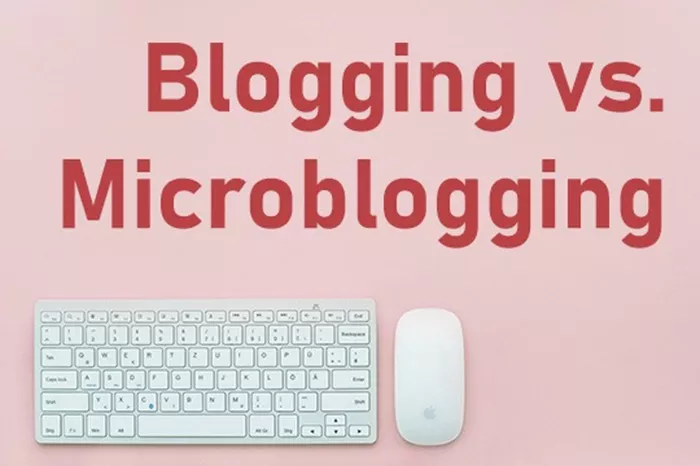In the ever-evolving digital landscape, the ways we share information, ideas, and experiences have diversified tremendously. Two popular modes of online communication—blogging and microblogging—serve distinct purposes and audiences. But what is the difference between blogging and microblogging? While blogging typically involves longer, in-depth content shared on dedicated platforms, microblogging focuses on shorter, more concise posts, often shared on social media platforms. Understanding these differences can help individuals and businesses choose the platform that best suits their objectives, whether they are looking to provide detailed insights or engage in quick, frequent updates.
What Is Blogging?
Blogging refers to the creation and maintenance of a blog, a digital space where individuals or organizations post content regularly. Blogs are generally longer-form pieces of writing, often accompanied by images, videos, or other multimedia elements. Topics covered in blogs can range from personal experiences and hobbies to professional advice and news commentary.
Key Characteristics of Blogging:
- Length and Depth: Blog posts are typically comprehensive, ranging from 500 to 2,000 words or more. They allow for detailed exploration of topics.
- Structure: Blogs often follow a structured format, including an introduction, body, and conclusion. Subheadings, bullet points, and numbered lists enhance readability.
- Multimedia Integration: Blogs support various multimedia elements such as images, videos, infographics, and embedded links.
- Platform Options: Popular blogging platforms include WordPress, Blogger, and Medium, providing tools for customization and optimization.
- SEO and Marketing: Blogging is a powerful tool for search engine optimization (SEO) and content marketing. By using keywords and engaging content, bloggers can attract more traffic to their sites.
- Frequency: While frequency varies, many bloggers publish posts weekly or biweekly to maintain audience engagement.
What Is Microblogging?
Microblogging, as the name suggests, involves sharing short snippets of content. These posts are concise and often focus on real-time updates or immediate reactions. Platforms like Twitter, Tumblr, and Instagram are prime examples of microblogging spaces.
Key Characteristics of Microblogging:
- Brevity: Microblogs are characterized by their short length. For example, Twitter limits posts to 280 characters, while Instagram relies heavily on images with brief captions.
- Immediate Engagement: Microblogging thrives on instant feedback, including likes, shares, and comments.
- Real-Time Updates: Microblogs often capture moments, news, or thoughts as they happen.
- Mobile-Friendly: Designed for ease of use on mobile devices, microblogging platforms cater to users on the go.
- Frequency: Microbloggers often post multiple times a day to stay active and visible.
Key Differences Between Blogging and Microblogging
While both blogging and microblogging serve as mediums for content sharing, they differ significantly in terms of purpose, format, and audience engagement.
1. Length of Content
- Blogging: Allows for detailed and long-form content.
- Microblogging: Focuses on brevity and concise communication.
2. Frequency of Posts
- Blogging: Requires less frequent updates due to the length and depth of posts.
- Microblogging: Involves frequent, often daily updates.
3. Platforms Used
- Blogging: Popular platforms include WordPress, Medium, and Blogger.
- Microblogging: Platforms like Twitter, Instagram, and Tumblr dominate the microblogging space.
4. Target Audience
- Blogging: Appeals to readers seeking in-depth information or storytelling.
- Microblogging: Attracts audiences looking for quick updates or engaging visuals.
5. Interaction Style
- Blogging: Engagement typically comes through comments at the end of posts.
- Microblogging: Encourages immediate interactions through likes, retweets, and replies.
6. Purpose and Usage
- Blogging: Ideal for building authority, providing tutorials, or sharing detailed insights.
- Microblogging: Suitable for real-time news, personal updates, or promotional snippets.
When to Choose Blogging
Blogging is the preferred choice for individuals and businesses looking to:
- Establish themselves as thought leaders in a specific field.
- Provide in-depth information or tutorials.
- Optimize content for search engines to drive organic traffic.
- Maintain a professional online presence.
Examples of successful blogging include niche websites, company blogs for marketing, and personal blogs showcasing expertise or experiences.
When to Choose Microblogging
Microblogging is ideal for those who:
- Want to engage with their audience in real-time.
- Share frequent updates or promotional content.
- Focus on visuals, such as photos or infographics.
- Build a personal brand through short, impactful messages.
Examples of effective microblogging include Twitter accounts for breaking news, Instagram profiles for visual storytelling, and Tumblr blogs for quick, creative posts.
Can Blogging and Microblogging Work Together?
Absolutely. Many successful individuals and businesses integrate both blogging and microblogging into their digital strategies. For instance:
- A travel blogger may maintain a detailed blog while using Instagram for quick photo updates.
- A company can publish in-depth articles on their blog and use Twitter to share highlights and drive traffic.
The synergy between blogging and microblogging allows for broader audience reach and diversified content strategies.
Challenges of Blogging and Microblogging
Blogging Challenges:
- Time-consuming: Writing detailed posts requires effort and research.
- Consistency: Maintaining a regular posting schedule can be difficult.
- Competition: Standing out in a crowded blogosphere is challenging.
Microblogging Challenges:
- Limited Depth: The brevity of posts can restrict detailed communication.
- Overcrowding: Microblogging platforms are saturated with content, making visibility a challenge.
- Instant Nature: Requires frequent updates and responsiveness.
Conclusion
Blogging and microblogging are distinct yet complementary tools in the digital communication toolkit. Blogging excels in delivering depth and establishing authority, while microblogging shines in immediacy and engagement. By understanding their unique strengths and challenges, individuals and businesses can make informed decisions and leverage both formats to achieve their goals.
Related Topics
- What Does DA Mean In Blogging?
- How Much Do You Earn Per 1,000 Views On Blogging?
- What Is Traffic In Blogging?

